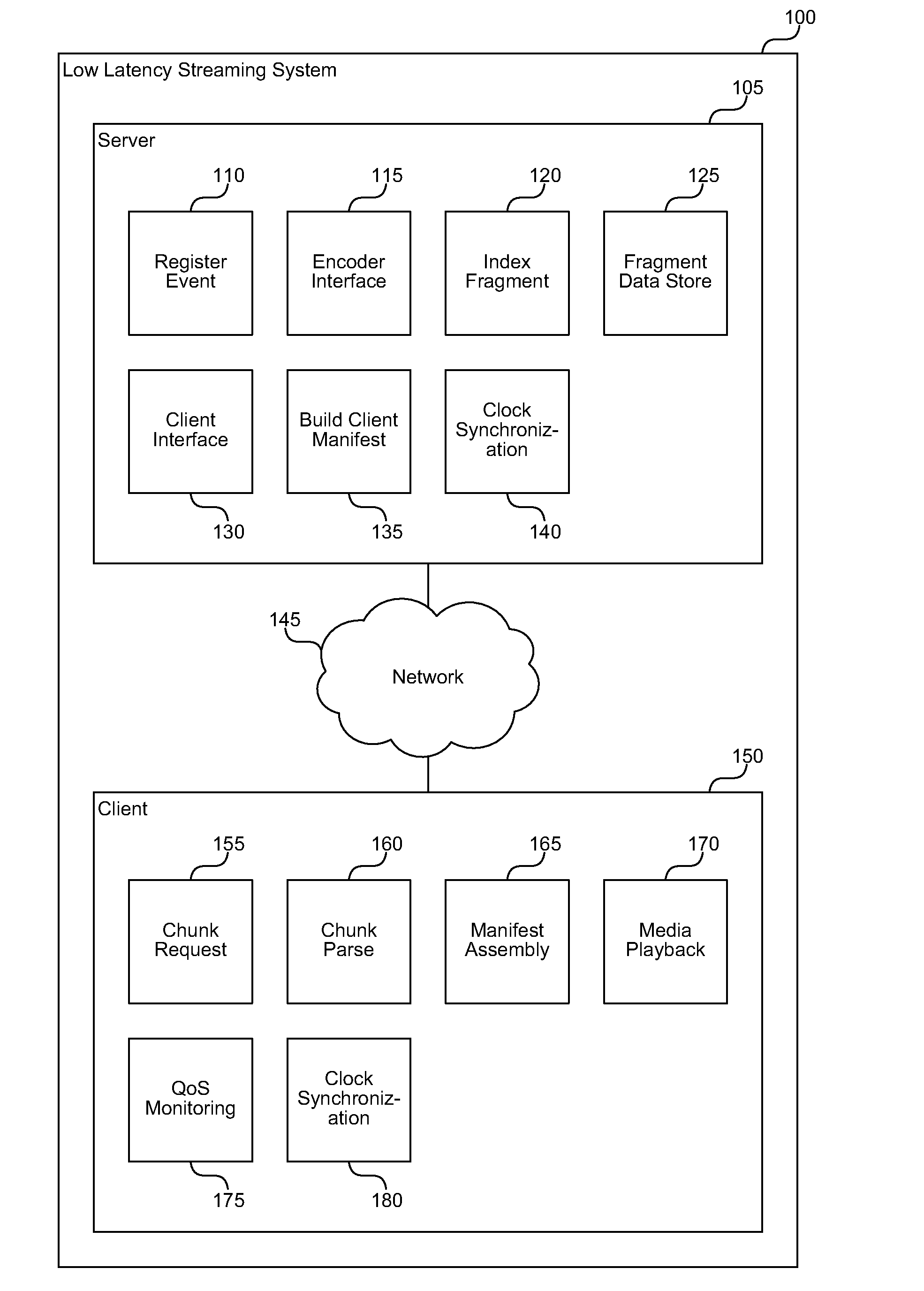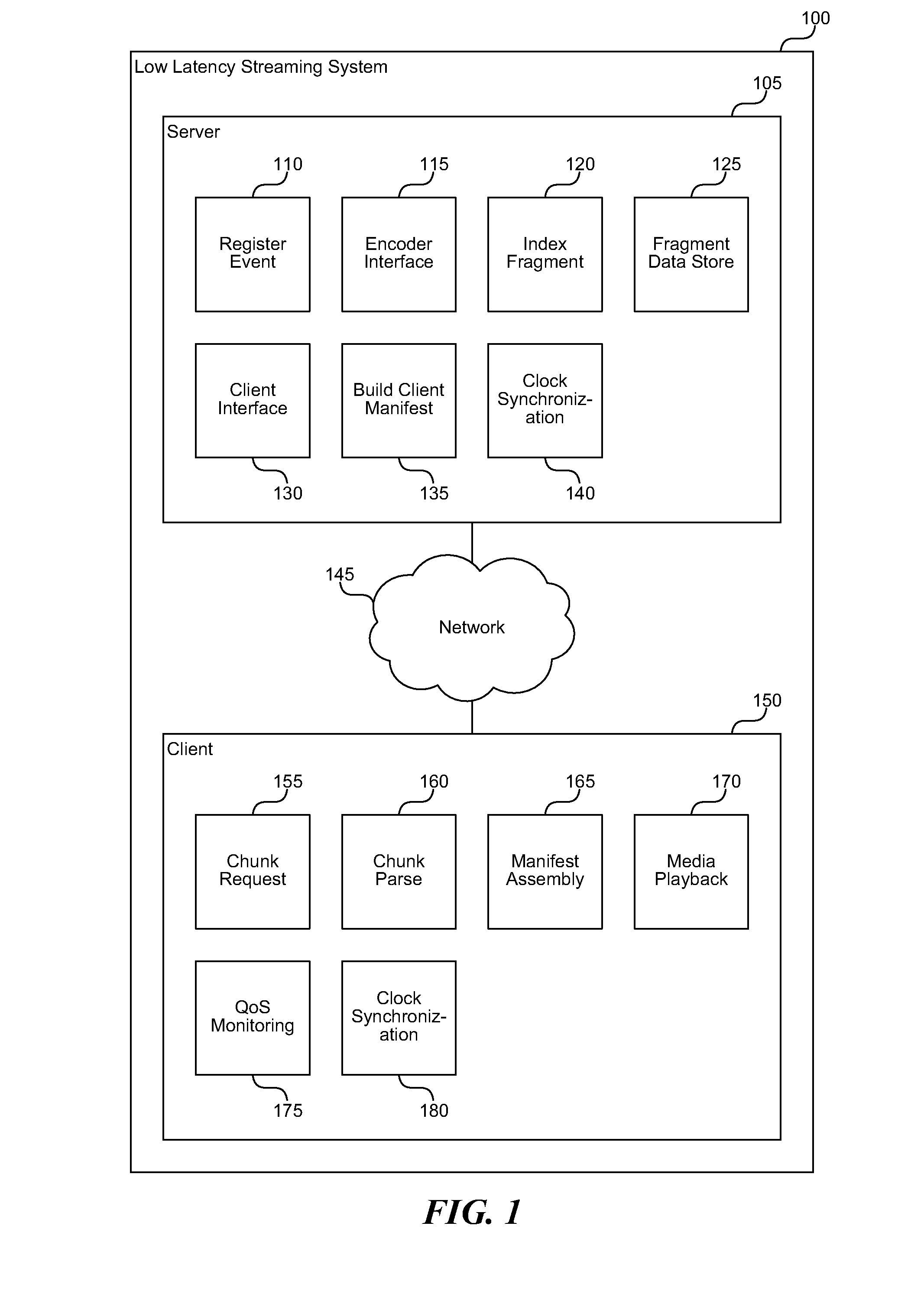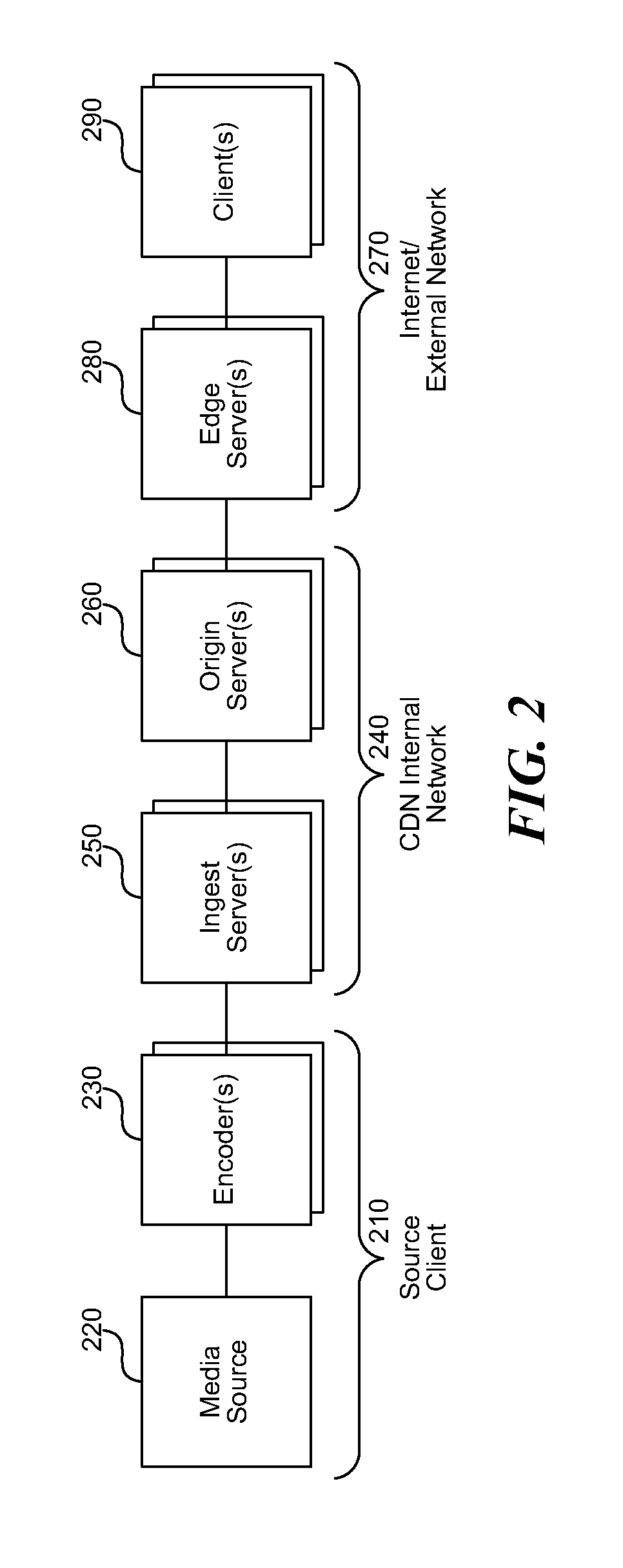Low latency cacheable media streaming
- Summary
- Abstract
- Description
- Claims
- Application Information
AI Technical Summary
Benefits of technology
Problems solved by technology
Method used
Image
Examples
Embodiment Construction
streaming system to handle a client connection for streaming media at a server, in one embodiment.
[0012]FIG. 5 is a data flow diagram that illustrates the flow of media fragments from an encoder to an origin server to a client, in one embodiment.
[0013]FIG. 6 is a flow diagram that illustrates the processing of the low latency streaming system on a client to playback media, in one embodiment.
[0014]FIG. 7 is a flow diagram that illustrates the processing of the low latency streaming system to handle a single media chunk at a client, in one embodiment.
DETAILED DESCRIPTION
[0015]A low latency streaming system is described herein that provides a stateless protocol between the client and server with reduced latency over previous systems. The server embeds incremental information in media fragments (i.e., chunks) that eliminates the usage of a typical control channel. In addition, the server provides uniform media fragment responses to media fragment requests (i.e., clients requesting the s...
PUM
 Login to View More
Login to View More Abstract
Description
Claims
Application Information
 Login to View More
Login to View More - R&D
- Intellectual Property
- Life Sciences
- Materials
- Tech Scout
- Unparalleled Data Quality
- Higher Quality Content
- 60% Fewer Hallucinations
Browse by: Latest US Patents, China's latest patents, Technical Efficacy Thesaurus, Application Domain, Technology Topic, Popular Technical Reports.
© 2025 PatSnap. All rights reserved.Legal|Privacy policy|Modern Slavery Act Transparency Statement|Sitemap|About US| Contact US: help@patsnap.com



